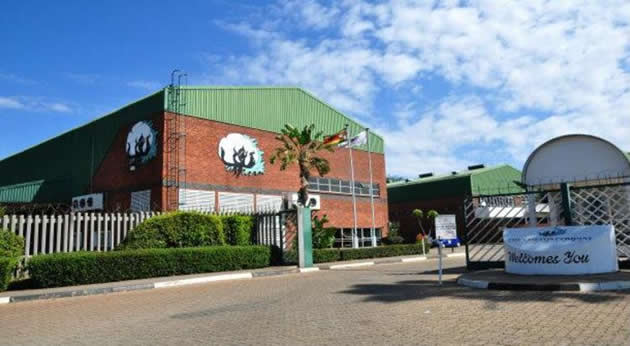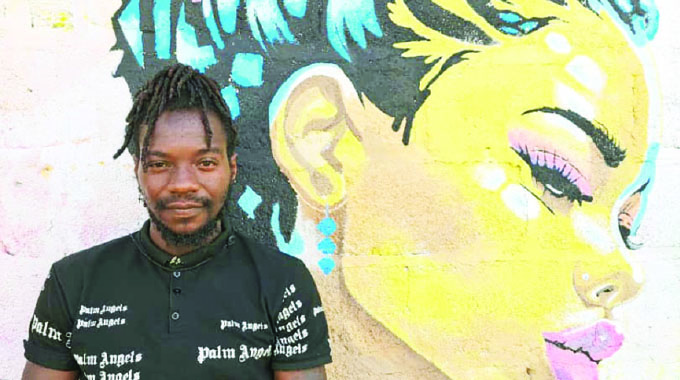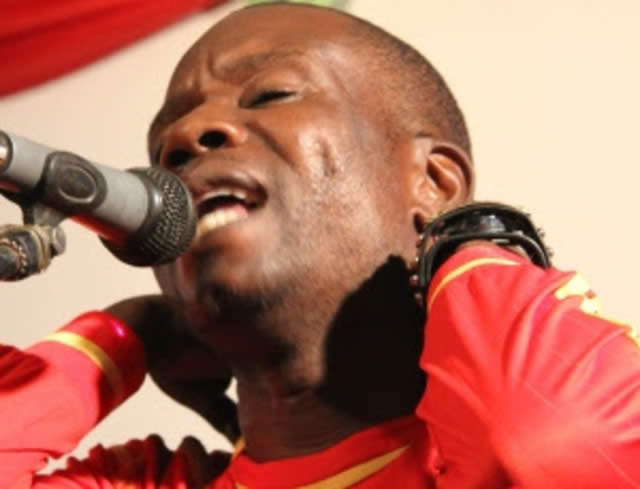Zim, Zambia enhance arts ties


Zimbabwe and Zambia arts bodies’ management teams pose for a group picture at an indaba held in Kariba recently
Zambia and Zimbabwe met in Kariba recently for a joint exercise that seeks to create ties between the arts governing bodies. The meeting was attended by members of management teams from both national councils, led by their respective directors, Elvas Mari of Zimbabwe and Zambia’s Adrian Chipindi. NAC Zimbabwe deputy director, Nicholas Moyo facilitated the discussions.
Each party brought in six senior members of management to the meeting as part of experience-sharing and networking.
The meeting was a result of discussions between the two heads of institutions realising value in leveraging on the proximity to each other as well as being founding members of the International Federation of Arts Councils and Arts Agencies (IFACAA).
There also exist a number of commonalities cutting across the mandates of the two institutions.
Key outcomes of the meeting were the finalisation of a Memorandum of Understanding, identification of critical areas of cooperation as well as the establishment of a Joint Technical Committee to operationalise the MoU.
NAC Zimbabwe director, Mari, welcomed all present and explained that the meeting was timely and appropriate in that both organisations were mandated with championing the arts as common ground.
Other factors that buttressed the importance of the meeting were that both countries had similar cultural values and mores in some areas, inclusive of dance, language and even shared natural resources.
Both parties were founding members of the International Federation of Arts Councils and Culture Agencies (IFACCA) in December 2000, in addition to being members of the African Union, Southern African Development Community and Common Market for Eastern and Southern Africa.
As such the meeting cemented an already existing relationship that provided an opportunity to explore possibilities of promoting and developing the arts and culture between Zambia and Zimbabwe.
Mari then outlined the objectives of the meeting as being:
Promotion of synergies between the two organizations, as part of enhancing cooperation among southern African countries;
Enhancing the contributions of the two NACs to IFACCA through activating a bilateral learning and sharing platform; and
Developing a Memorandum of Understanding as a basis for collaborations between the two organisations.
Moyo articulated the Structure and programmes of the NAC Zimbabwe as being guided by a motto; “Leading the Promotion of the Development of Arts and Culture in Zimbabwe”. He explained that National Arts Council of Zimbabwe (NACZ) was formed by an Act of Parliament in 1985, and was thus a statutory body under the Ministry of Rural Development, Promotion and Preservation of National Culture and Heritage.
NACZ mandate was explained as “fostering, developing and improving the knowledge, understanding and practice of the arts in Zimbabwe through encouraging the teaching and practice of the arts and their presentation, performance, execution and exhibition to the public”.
He shared the vision and mission as well as core values, before outlining the organisational structure of a Board, Management, Head Office staff, Provincial Offices and the Murehwa Culture Centre. He explained the operations of provinces as key in feeding into the national processes, and underscored the co-ordination of national programmes by head office.
NACZ programmes were outlined as:
National Arts Merit Awards (NAMA): the celebration of artistic excellence in all genres of literary, theatre, visual arts, dance, film spoken word, music and media categories;
Culture Week Celebrations: national celebrations by all players in the sector punctuated by a National Launch and cascading of activities at provincial level, both within NACZ and by other players;
Jerusarema Mbende Dance Festival: the festival held at Murehwa Culture Centre to promote the safeguarding and preservation of the dance, which was proclaimed by UNESCO in 2005 as a Masterpiece for Intangible Cultural Heritage;
Jikinya Traditional Dance Festival: a key celebration heralding dance among school children;
Cellebrity Funeral Fund: though defunct this was explained as an insurance that had been negotiated by NACZ to cushion artists in the event of death.
Moyo articulated other partnership programmes with the corporate sector and embassies as well as the successful publication of the Arts Directory which was shared with all stakeholders at the meeting. The Deputy Director cited the placing of the NACZ under the new Ministry as bringing more components of arts and culture under one roof; such as having traditional leaders, cultural practitioners, heritage, archives and artists. There were even more opportunities of taking major NACZ Programmes to other provinces throughout Zimbabwe.
NAC Zambia Director, Adrian Chipindi shared the background to the founding of the Arts Council of Zambia through an Act of Parliament in 1994 with a clear mandate to “Develop, promote, regulate and encourage all forms of amateur and professional arts” as well as “assist financially or otherwise, in conjunction with government” the arts sector.
The organisation is based in Lusaka, and had only just begun focusing on developing a presence in Livingstone with the major focus being on arts associations and limited on the inclusion of promoters at the core of their business.
Chipindi explained the composition of their Board as having a total of 13 members, of whom the majority were representatives of arts associations from each genre, while Government had room to appoint only two representatives to represent their interests.
Each term of the Board was four years, with the current one scheduled to end in 2017.
On the programmatic side he identified these as having two core departments — literary and performing arts, and visual arts, exhibitions and fashion. They also had their registrations and compliance department structured within the administration department, which also had the finance office. He informed the meeting that NAC Zambia was in the process of preparing for its annual Literature Festival in September and took the liberty to invite all participants to the meeting.
On festivals, Chipindi cited two major ones as being the NAC Zambia’s focus: the literature festival and the Ngoma Awards. He indicated that often their operations were guided by the presence of other players and they often chose to fill the vacuum areas to ensure all artistic genres were as widely represented as is possible. This was to ensure that none of their programmes appeared to be in competition with arts associations
Tsaukai Mututwa, NAC Zimbabwe Assistant Director Administration and Finance, explained that though there was a facility known as the Arts Development Fund (ADF), it was currently not functional due to lack of funding. The ADF was based on the guarantee seed money which had been pooled and deposited with a financial institution to enable artists to access loans at concessionary rates with no guarantee.
The bank required NAC Zimbabwe to recommend projects for funding, while the financial institution would do the paperwork and due diligence required with such processes and the subsequent follow-up of the repayments The most important and empowering aspect about the fund was that it was not using government funding but funds sourced from corporate. The 2008 challenges of hyper-inflation resulted in the fund collapsing. NAC Zimbabwe has not been able to amass more funds since to reconstitute the ADF. However a number of success stories were recorded on all the aspects of the ADF.
NAC Zambia receives a grant from government, which is used to capacitate arts associations as well as implement programmes. Though the onus was on them to ensure the auditing of their finances, they stood guided by government policy statements and directives.
The Director cited that programmatically, they operate an arts development fund which distributes approximately US$25 000 annually to arts organisations and artists, in addition to running the Ngoma Music Awards. The limited funds required them as NAC to devise even more creative ways of generating income for their sustenance.
Assistant Director (Arts Promotion and Development), Audrey Charamba, indicated that regulation of the sector was part of their mandate within the context of promotion of the arts. This was aimed at NAC Zimbabwe having an overview of sector and this in turn assists in feeding into the national reporting structures and the broad ministry strategy, as well as advising sector and policy makers on sector pulse while in sync with issues on the ground.
The clearing of foreign artists was explained as involving other government departments such as the Zimbabwe Revenue Authority – Zimra and Immigration. As such, NAC Zimbabwe required that sector players begin the process of clearing foreign acts at least eight weeks in advance to enable all departments to work expediently without exertion of pressure.
The NAC Zambia team articulated that a lot of the issues were similar in terms of regulating the sector; i.e. the registration and the clearance of artists. The major difference was on the figures charged to the players. There was also a lot of collaboration with the police in stopping unsanctioned shows and conducting blitzes on unregistered venues. All promoters were required to renew their operating licences annually and had to pay to all government departments for the bringing in of foreign acts.
To effectively explore the key areas of co-operation, participants were split into two groups wherein their consolidated areas of focus were outlined as following:
Skills exchange (capacity building of staff, artists and arts organisations);
Festival management experience-sharing (internships, exchange of performances and or presentations and designing of festivals;
Resource mobilisation for joint projects (collateral issues around ADF remodelling, sustainable arts funds-creation and management, and joint fundraising from entities such as UNESCO, EU and corporates);
Operationalisation of SADC, AU, UNESCO and other protocols, bilateral agreements, replicating of best practices and subsequent reporting
Co-hosting of bilateral indabas
Cultural exchange of artists between countries e.g. Jikinya hosting Zambian group and vice versa
The meeting then agreed that a Joint Technical Committee (JTC) would follow through with the further unpacking of the outlined areas. The team would comprise two people from each end and would schedule meetings to complete the task to enable immediacy in implementation. Two leaders of the JTC were appointed and are Nicholas Moyo NAC Zimbabwe deputy director and Mwiche Chikungu NAC Zambia head of Literature and Festivals
Chipindi expressed appreciation for the convening of the meeting and the level of commitment by both parties. He applauded the finalisation of the Memorandum of Understanding, indicating that it was articulating very practical aspects for the sector, as the opportunity to learn from each other and undertake collaborations was vast.
Given the proximity of the two countries, he cited that logistically communication and exchanges were practical, and urged that focus retains the vision of developing the sector and promoting its activities. He invited Zimbabwe to the next meeting to be held in Siavonga and extended an invitation to Zimbabwean team to their literature festival in September. He applauded the setting up of a Joint Technical Committee and cited it as the vehicle that would move the process forward.
The four images show participants to the joint meeting of the National Arts Councils of Zambia and Zimbabwe. — panorama.co.zw







Comments